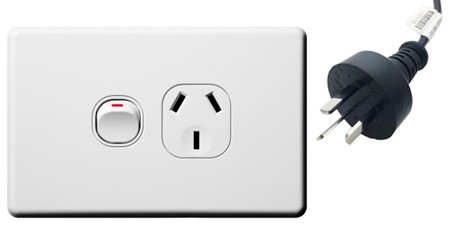Sydney is located in New South Wales, Australia.
By Air
Sydney’s Airport (SYD) is the international airport in Sydney, Australia and is located 8 km (5 mi) south of Sydney City Centre, in the suburb of Mascot. Trains from the train station located at Sydney International Airport provide easy transfer to Central station and all stations on the city circle directly. Most Sydney public transport services accept the Opal Card, which can be purchased before boarding the train at the International Airport.
Information on how to get to the city (Central Station) is provided at:
https://transportnsw.info/travel-info/using-public-transport/getting-to-airport
Several taxi companies service Sydney, and taxi ranks are located outside each of the airport terminals. For taxis, the fare is around $30-50 depending on the day of week, time of day and traffic.
GETTING AROUND SYDNEY
Sydney has a good public transportation system. Most Sydney public transport services accept the Opal Card, which can be purchased before boarding the train at the International Airport.
All major car rental companies have branches at Sydney Airport.
GENERAL INFORMATION
Languages
The official language of Australia is English.
Passport / VISA
Passport and visa requirements vary from country to country. Please visit the website for the Australian Consulate or High Commission in your country for further details.
On the website is a general letter of invitation for those requiring one to process their visas.
Currency
Australian dollars (AUD) is the currency of Australia. Australia has a Goods and Services Tax (GST). The GST is included within the listed prices.
Electrical Appliances
Electricity supply in Australia is 220-240 volts. Power points (electrical sockets/outlets) in the Commonwealth of Australia are the “Type I” Australian AS-3112 type. If your appliance’s plug does not match the shape of these sockets, you will need a travel plug adapter in order to plug in. The plugs in Australia have two flat metal pins shaped like an upside down “V” and some may contain a third flat earth pin below the other two flat pins.

Time Zone
Sydney in December will be in the Australian Eastern Daylight Time or AEDT, which has a UTC offset of + 11:00.
Phoning Australian phone numbers
Australian phone numbers usually have 10 digits – 2 for the area code and 8 for the number. For example, a typical Sydney number might be listed as (02) 9876 5432.
If you were calling this number from outside Australia, you would add your international dialling code, add 61, which is the international country code for Australia, remove the first 0 digit, then add the number.
For example, in North America, the international dialling code is 011, so from North America, the number above would be dialled as 011 61 2 9876 5432.
Phoning overseas from Australia
To call overseas from within Australia you will use the international dialling code, which is 0011.
Usually, you would dial 0011 + Country Code + Area code + Telephone Number.
So to call the United States or Canada for example, with a country code of 1, you would dial 0011 + 1 + Area Code + Tel #.
Take care when dialling, as 000 is Australia’s emergency services number
Weather
December is the first month of the Australian summer. Temperatures in Australia are usually reported in Celsius (C). While average daytime temperature in Sydney in December is 22C, daytime temperatures in the 30Cs are not uncommon. The sun is at its most damaging between noon and 2pm daily.
Shopping
Sydney is the ideal place to shop a wide variety of Australian products. Prices are reasonable and there are goods for all budgets.
Emergency calls
Australia’s main emergency call service number is Triple Zero (000). It can be dialed from any fixed or mobile phone, pay phones and certain Voice over Internet Protocol (VoIP) services.
There are also two secondary emergency call service numbers—112 and 106.
112 is available from all GSM or GSM derived mobile phones.
106 connects to the text-based relay service for people who have a hearing or speech impairment. All calls to the emergency numbers, whether from fixed, mobile, pay phones or VoIP services are free-of-charge.